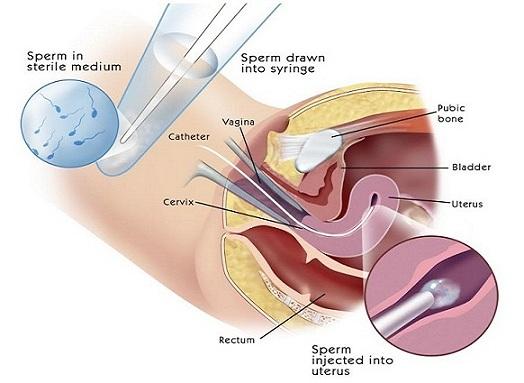What is IUI?
IUI involves a laboratory procedure to separate fast-moving sperm from more sluggish or non-moving sperm. It can be performed with your partner’s sperm or donor sperm (known as donor insemination).
Is IUI for me?
You may be offered IUI if:
- you are using donated sperm in your treatment (donor insemination)
- you are unable (or would find it very difficult) to have vaginal intercourse, for example because of a physical disability or psychosexual problem
- you have a condition that means you need specific help to conceive (for example, if you’re a man who is HIV positive and you have undergone sperm washing to reduce the risk of passing on the disease to your partner and potential child).
In the past IUI was offered if you had unexplained infertility, mild endometriosis or when a male partner had mild fertility problems. However, the National Institute for Health and Clinical Excellence (NICE) (an organisation which provides national guidance and advice to improve health and social care) has advised that it should now not routinely be offered in these situations except for in exceptional circumstances.
Instead, if this applies to you, you are advised to try to conceive for a total of two years before IVF will be considered (this can include up to one year before your fertility investigations).

IUI options
If your clinic has recommended IUI treatment, you may want to have a discussion with your clinician about the risks involved in using fertility drugs to boost egg production and whether IUI without fertility drugs might be suitable for you.
- Risks of fertility treatment
If IUI is unsuccessful you may want to talk to your clinician about other procedures such as IVF.
- In vitro fertilisation (IVF)
How does IUI work?
Patency health tests
IUI can only begin once it has been confirmed that your fallopian tubes are open and healthy. This will usually be checked through a tubal patency test as part of your assessment by the fertility clinic.
This may involve a laparoscopy, an operation in which a dye is injected through your cervix as the pelvis is inspected for blockages with a telescope that has a tiny camera attached (a laparoscope).
Alternatively, you may undergo a hysterosalpingo-contrast sonography (HyCoSy) – which involves using a vaginal ultrasound probe to check the fallopian tubes for blockages – or a hysterosalpingogram, an x-ray of your fallopian tubes.
The procedure
For women
If you are not using fertility drugs, IUI will be performed between day 12 and 16 of your monthly cycle – with day one being the first day of your period. You will be given blood tests or urine tests to identify when you are about to ovulate.
Or:
If you use fertility drugs to stimulate ovulation, vaginal ultrasound scans are used to track the development of your eggs. As soon as an egg is mature, you are given a hormone injection to stimulate its release.
The sperm will be inserted 36–40 hours later. The doctor will first insert a speculum into your vagina, as in a smear test, to keep your vaginal walls apart. A small catheter (a soft, flexible tube) will then be threaded into your womb via your cervix. The best-quality sperm will be selected and inserted through the catheter.
The whole process only takes a few minutes and is usually painless. Some women may experience a temporary, menstrual-like cramping. You may want to rest for a short time before going home.